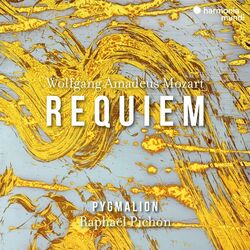Raphaël Pichons Aufnahme des Mozart-Requiems ist ein Ereignis an Intensität, Drama und musikalischer Qualität, auch wenn man sich fragt, wieso er die Süssmayr-Fassung und nicht die heute doch mehr geschätzte Fassung von Robert Levin benutzt. Im Übrigen leitet Pichon das Requiem mit weniger bekannten Vokalstücken Mozarts ein und fügt auch solche in den Ablauf ein, was dramaturgisch durchaus interessant ist. Dass Pichon diesen kleinen Werken dieselbe Qualität zukommen lässt ist klar.
Neben der fesselnden Intensität bewundert der Hörer vor allem das Niveau des Orchesters und des gestochen scharf singenden Chors. Auch das Solistenquartett mit Ying Fang, Beth Taylor, Laurence Kilsby und Nahuel di Pierro fügt sich gut in dieses dynamische, dramatisch gestaltete Requiem ein.
Raphaël Pichon’s recording of the Mozart Requiem convinces with a lot of intensity, drama and musical quality, even if one wonders why he uses the Süssmayr version and not the Robert Levin version, which is more appreciated today. In addition, Pichon introduces the Requiem with lesser-known vocal pieces by Mozart, and also inserts them into the sequence, which is quite interesting from a dramaturgical point of view. It is clear that Pichon brings the same quality to these smaller works.
In addition to the captivating intensity, the listener admires above all the level of the orchestra and the razor-sharp singing of the chorus. The solo quartet of Ying Fang, Beth Taylor, Laurence Kilsby and Nahuel di Pierro is also well suited to this dynamic, dramatic Requiem.





















